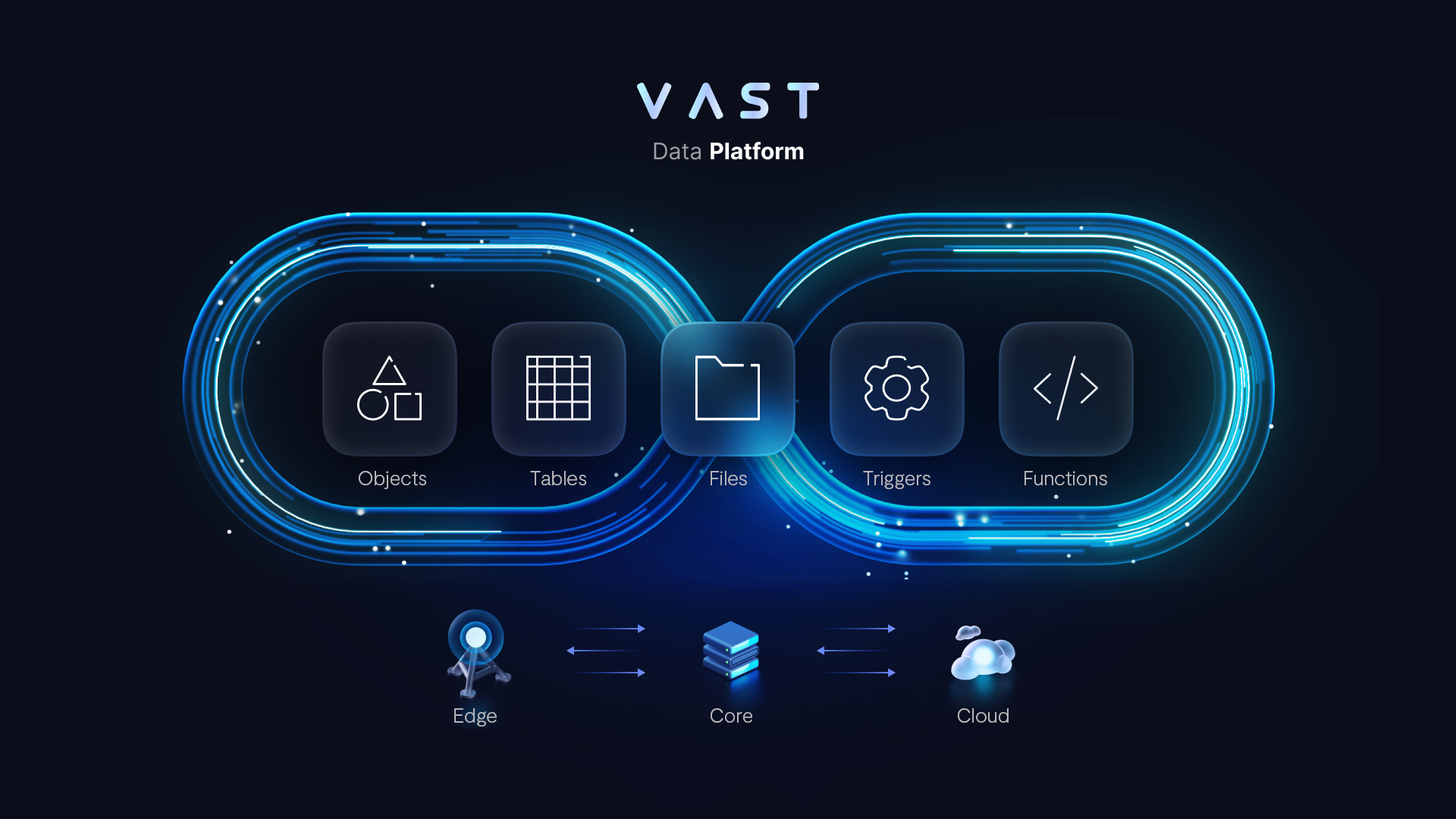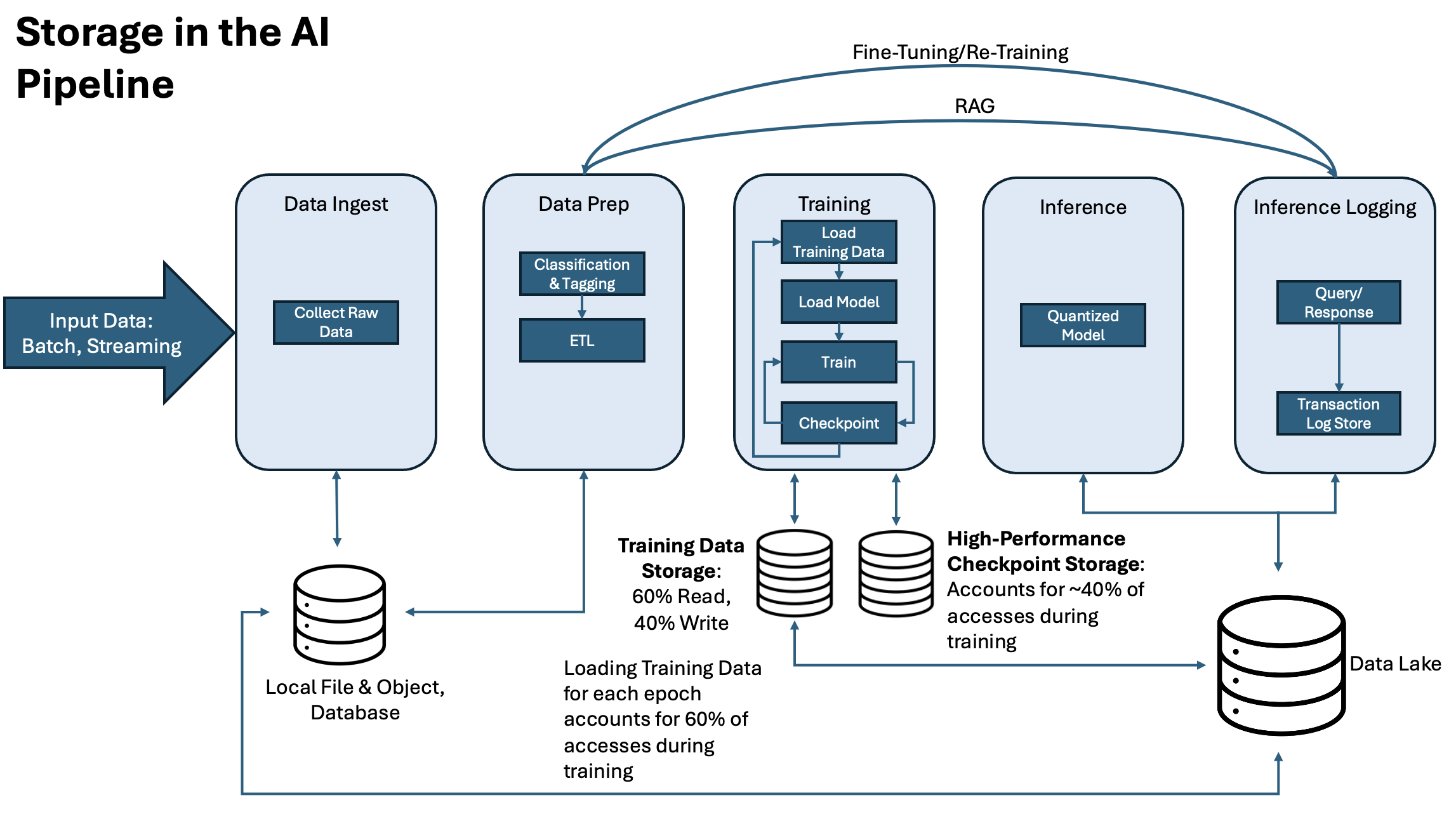
Background
The enterprise infrastructure market is in the doldrums, with nearly every server and storage OEM showing only modest growth in fourth-quarter earnings. Moreover, these same OEMs are telling us that the market is slowing, with longer enterprise sales cycles and more considering buying decisions. Even so, storage continues to grow, with solid performance from an unexpected player.
Looking only at revenue growth, Pure Storage was the most successful of the big storage vendors exiting 2022. The company delivered 15% year-on-year topline growth for its $810M fourth quarter. Dell Technologies, the dominant storage player, grew its storage business a respectable 10%, delivering $5B in revenue, while Hewlett-Packard Enterprise grew 5% year-on-year. Industry stalwart NetApp lost revenue, reporting a shrinkage of 5%. From a raw dollar growth perspective, Dell remains the champion.
These seemed like decent numbers until VAST Data chimed in. VAST is not a company that’s shy about its success or aspirations. It also appears to have reasonable cause to brag. VAST Data told us this week that it more than doubled its business in 2022, exiting the year with its best quarter in company history.
News: VAST Momentum Report
VAST Data emerged in 2016 with the mission to fully exploit the potential of the continuing advances in storage technology. In addition, it wanted to disrupt how the world thinks about storage architecture. The company, led by founder and CEO Renen Hallack, is executing well to that vision. VAST delivered a product to market that’s finding increasingly broad success, success that’s yielded a set of business metrics that any company would envy.
VAST reports that it more than doubled its annual recurring revenue in 2022, growing by 2.5 times over the previous year. VAST did this while maintaining an enviable gross margin of 90%, notably above the industry average. The company also demonstrated consistent cash flow positivity for the third consecutive year, outgrowing the market, it says, by 76 times the industry average during the same period. This tracks with VAST Data placing near the top of the Deloitte Technology Fast 500, which ranks the fastest-growing technology companies.
Much of this revenue growth came from new customers. VAST quadrupled the number of Fortune 1000 customers. VAST tells us that its top 100 new customers spend more than $1.2M on average. While not part of its earnings release, VAST told us last year that its average deal size is about $1.2M, with several customers investing over $10M. VAST has three customers with over $100M committed to its Universal Storage.
The VAST Data customer base is also diversifying, broadening its reach and showing acceptance of its technology in new markets. VAST reports that it has wins in financial services, life science, research institutions and universities, and media and entertainment studios. VAST Data also has significant wins across several U.S. federal agencies. VAST excels where data is big and performance paramount.
I’ll temper my enthusiasm by pointing out that, as a private company, VAST is free to choose the metrics that make it look best. Growth numbers are easy when the numbers are small, and we don’t know how many revenue dollars VAST Data is generating. My guess is that these aren’t small numbers. The company reported last year that it achieved a $150M bookings run rate in 2020. This week, VAST reported that it has an annual run rate of over $100M.
VAST Innovation
While VAST Data began life as an integrated storage appliance, it’s since fully transitioned into a software-only company. VAST will help you with the hardware, but partners provide the underlying platform. This model contributes to the 90% gross margins that VAST reports, but, equally important, it also allows its engineering teams to innovate independently of the platform.
There’s no room here to describe VAST’s Universal Storage “disaggregated shared everything (DASE)” architecture. VAST has a comprehensive whitepaper describing the architecture if you’re interested in the technical details. I wish more vendors were as detailed about what’s happening under the covers.
VAST innovated in 2022, leveraging exciting new technologies to bring greater functionality to its end customers. For example, in March of last year, VAST announced that it was using Nvidia Mellanox DPUs as part of its latest generation Ceres platform to offload some network and storage processing from the system’s processors.
Just last month, VAST released its most extensive software release. The most exciting element in that release is the VAST Catalog, which provides the foundation for a Semantic Layer, allowing customers to understand, discover, and access data under store with standard search terms. This brings VAST up the stack, makings its solution more about data and less about storage. That’s the right path in a world flooded with unstructured data.
Analysis
VAST Data doesn’t sell mainstream storage. It’s not competing head-to-head daily with NetApp and Pure Storage for your mid-range storage business, but it does compete against Dell’s higher-end PowerScale models. VAST engineered a solution targeted at multi-petabyte, high-performance workloads, and it’s there where the company has found its greatest success. VAST tells us it has more than eight exabytes of capacity under management across its customer base.
VAST is enjoying a steep years-long growth curve, and there’s nothing on the horizon to temper that. At this point, it’s all about execution, and the VAST team is doing that well. It has proven its technology across industries, becoming a critical element of some of the most demanding data environments in the world. It has demonstrated its business success. It has articulated a vision that resonates.
Choosing a vendor to trust with your most critical data is challenging. In an era of deep learning and AI-driven analytics, where the time-to-insight from your data is tied directly to your company’s success, your data infrastructure must be up to the challenge. VAST Data has proven itself in the most demanding of data-rich environments. It’s a worthy challenger.



